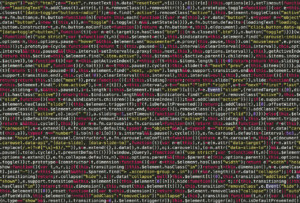How To Make Beats
Welcome to CuriositySound and our article “How To Make Beats” (Beginners Guide to Music Production) which has been designed for you to learn the basics of beat making.
So you want to become an Artist? Want to start making music because you love music so much?
Rather you want to be the next Jay Z, Shawn Mendes or want to create something completely new?

What Will You Need?
Also, You must be wondering Do I have everything I need to make beats?
In actuality, all you need is a laptop, music production software/DAW and headphones.
Recommended/Industry Standard DAW – FL Studio
^Click on the product image above to get your very first DAW FL Studio at a premium price.
Recommended Headphones – Audio-Technica ATH-M50x Professional Headphones, Black
^Click on the product image above to get your very first professional headphones by Audio Technica at a premium price.
Recommended Midi Keyboard – Alesis VI61 – 61-Key USB MIDI Keyboard with FREE DAW Pro Tools (another good DAW)
^Click on the product image above to get your very first professional Midi keyboard by Alesis at a premium price.
Hence, This article How To Make Beats (Beginners Guide to Music Production) covers six crucial points of beat making and will help kick-start your journey.
Elements & Arrangement of a Beat
| SIX ELEMENTS OF HOW TO MAKE BEATS | |
|---|---|
| 1 | Elements of a Beat |
| 2 | Arrange a Beat |
| 3 | Tips on Beat Making |
| 4 | Samples & VST Plugins Collection |
| 5 | Basics of Song Arrangements |
| 6 | Basics of Audio Mixing |
Quote to remember: “A beat is nothing but loops that are rearranged or repeated”
1. Elements of a Beat: 6 key elements

-
Kick drum
Kick is the largest drum in a real kit, it is the heart pumping component of the beat that hits you consistently throughout the song but it delivers the lowest frequencies.
Different genres of music use this component of a beat in different ways, for example in Disco music it plays constantly throughout the song but in the case of Old School Hip-Hop Beats
“you can hear the gaps purposely made to increase the effectiveness of other components of the beat”
On the other hand, the versatility of kick drums can be observed in the modern-day Trap sound of Hip- Hop where 808’s and kicks go hand in hand to make hard-hitting drum sounds.
As kick drums can vary a lot on the basis of genre, mix requirements, balance, and character.
-
Snare drum
The kick’s main companion, the snare is higher in pitch, with a fundamental frequency usually around 150-300Hz.
Unlike the kick, it has an extra element: the rattling, white noise sound of the snares themselves,
Hence, are wire springs resting against the bottom head of the drum that gives the snare its rasping top-end presence
In most genres, the snare is found on beats 2 and 4 (the backbeat), providing a sense of push and forward motion.
However, it can be displaced and create variations and syncopated beats.
-
Handclap
This element is the easiest to hear in a beat especially when you are training your ears in identifying different elements of a beat.
Similarly, handclaps are usually a sample of multiple people clapping at once and a lot of times are used to make the snare stand out.
Also, the clap may also be used as an extra percussion element, unrelated to the snare part.
-
Hi-hats
The hi-hats are a pair of cymbals that are extremely expressive.
With a real hi-hat, open and closed sounds cannot be used simultaneously, and this is often mimicked in electronic beats, cutting off the open hi-hat when a closed one is played.
Also, Hi-hats often play a repetitive pattern, keeping the groove flowing while the kick and snare play a more syncopated figure.
-
Melodies
The melodies are the instruments that are played over the drums. The instrument can be a piano, synth, bass, strings, guitar and more.
Also, the melody of a beat and vocals can be the same or completely different.
Hence, in order to create better melodies & record more professional-sounding vocals being in the key is very important.
Click here to learn about Music Theory (Recommended) or Click here for hacks that will help you create melodies right away.
-
Samples
Hence, a lot of Hip-Hop beats feature samples that have been chopped and reorganized to fit a drum pattern.
To learn more about Elements of a beat visit this article by MusicRadar(Recommended)
2. Arrange a Beat
Music Producers can spend anywhere from 30 minutes to 30 hours creating & perfecting a beat.
Some mega-hits have been made under an hour and some can take more than a month to perfect.
The goal here is not to create a perfect record but to get you started with our article “How To Make Beats”.

Hence, take a look at this video in which Busy Work Beats use FL Studio to create a simple beat in 5 minutes. FL Studio or Fruity Loops is DAW aka Digital Audio
Workstation aka a music production software that you can use to create beats.
Click here to learn more about different DAW’s and How to Make your own Home Studio.
Watch more videos on Beat Making:
Also, These examples use various music hardware and programming, yet the procedure is especially the same for all.
Tips on Beat Making :
Here is a collection of beat-making tips to use when making your own beats in our article How To Make Beats.
- Pick one program and master it. Don’t try to learn everything at once.
- Study your favourite music producers. Try to recreate your favourite beats to understand how beats are made.
- Collaborate with other producers & artists. Build a community around you.
- Beats should usually stay under 3 1/2 minutes.
- Import MIDI. If you don’t know how to play the keyboard well, try importing MIDI files and editing the notes in your music software.
- When you need inspiration look at beat-making videos. Busy Bee Beats is one of the best beat making tutorial channels on YouTube.
- Have Fun!
Music Tempo Guide (few of the suggested tempos for different music genres.)
- Dub: 60-90 bpm
- Hip-hop: 60-100 bpm
- House: 115-130 bpm
- Techno/trance: 120-140 bpm
- Dubstep: 135-145 bpm
- Drum and bass: 160-180 bpm
Samples & VST Plugins Collection:
We have put together some of our best free resources for you to download and add to your music-making collection in our article “How To Make Beats (Beginners Guide to Music Production).
Free Drum Samples & Drum Kits:
- Free Drum Kits: 125+ Of The Best Drum Sample Kits In 2018!
- SoundPacks
- All Free Loops and Samples Packs by Producer Spot
Free VST Plugins:
Popular Free Sample Packs
- 8 Free Sample Packs Every Producer Needs
- FREE SAMPLE PACKS [OVER 5000 FREE DOWNLOADS!]
- Ultimate List Of FREE Sample Packs In 2018!
Song Arrangements Basics
Hence, once you have a good understanding of putting together a beat, next you need to understand song structures.
Different music genres are laid out differently. Song tempo and length may vary.
Common Song Structures:
Intro – Verse – Hook – Verse – Hook – Verse – Hook – Outro
or
Intro – Hook– Verse – Hook– Verse – Hook – Verse – Hook – Outro
R&B Songs
Intro – Verse – Hook – Verse – Hook – Bridge – Hook – Hook – Outro
Rock Songs
Intro – Verse – Hook – Verse – Hook – Solo – Hook – Hook – Outro
Also, The examples above are vague. Studying your favourite songs to see how they are structured will help you grasp the idea of songs structures quickly.
Also, You can also search Genius.com for song lyrics and see the order of song lyrics.
Audio Mixing Basics (How to Make Beats!):

When you have a decent beat, you need to ensure the sound is blended well to sound great on various devices.
Also, Audio Mixing is the way toward taking all the individual tracks and instruments, altering the sound levels, panning, including effects.
“And That’s Just The Beginning”
Also, Blending the sound will ensure your beat sounds great on your PC, auto, home stereo, and that’s only the tip of the iceberg.
Basic Mixing Theory
How To Mix Hip Hop Beats
Start Making Music- Thanks for Reading How to Make Beats!
Furthermore, there is in no way like getting hands-on involvement. You can make beats without taking anyone else’s help.
Now the question is not “How to Make Beats” but how can you practice, become an expert and build a community around yourself.
Also, By working with other music producers you will get demands for instruments, melody adjustments, and making distinctive sorts of patterns and patterns with your beats.
Therefore, these encounters will enable you to develop an idea of what music specialists are considering, and how to address their issues to make great music.
Hence, thank you for checking out our article How To Make Beats (Beginners Guide to Music Production). If you like our content feel free to look at other related articles by clicking on the Training Menu.
